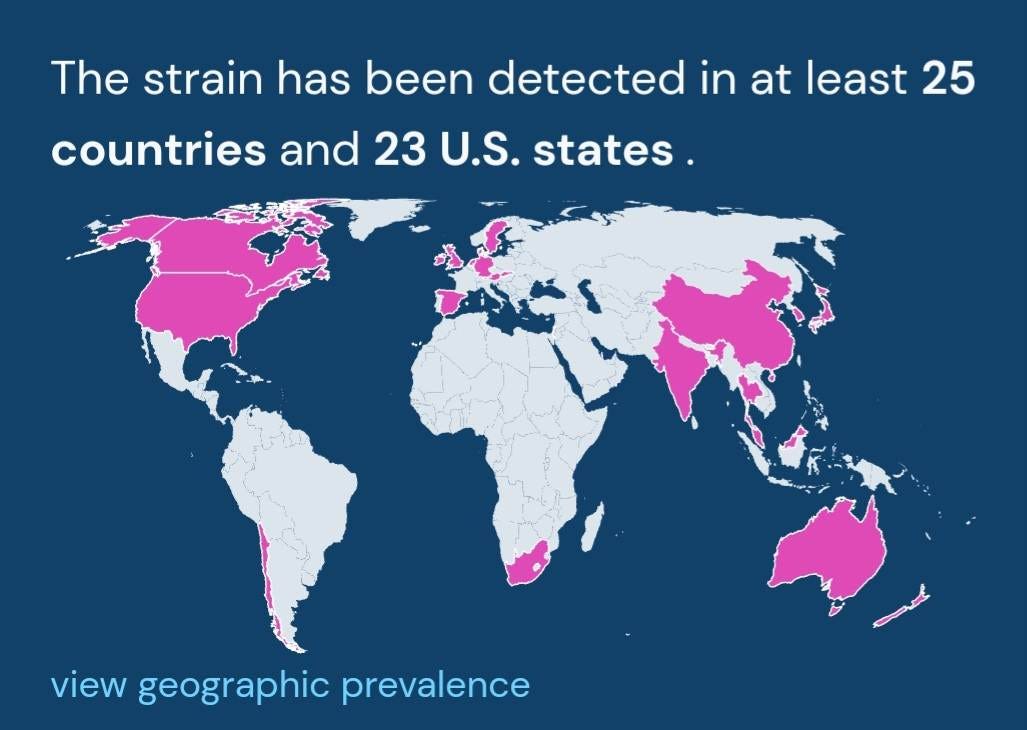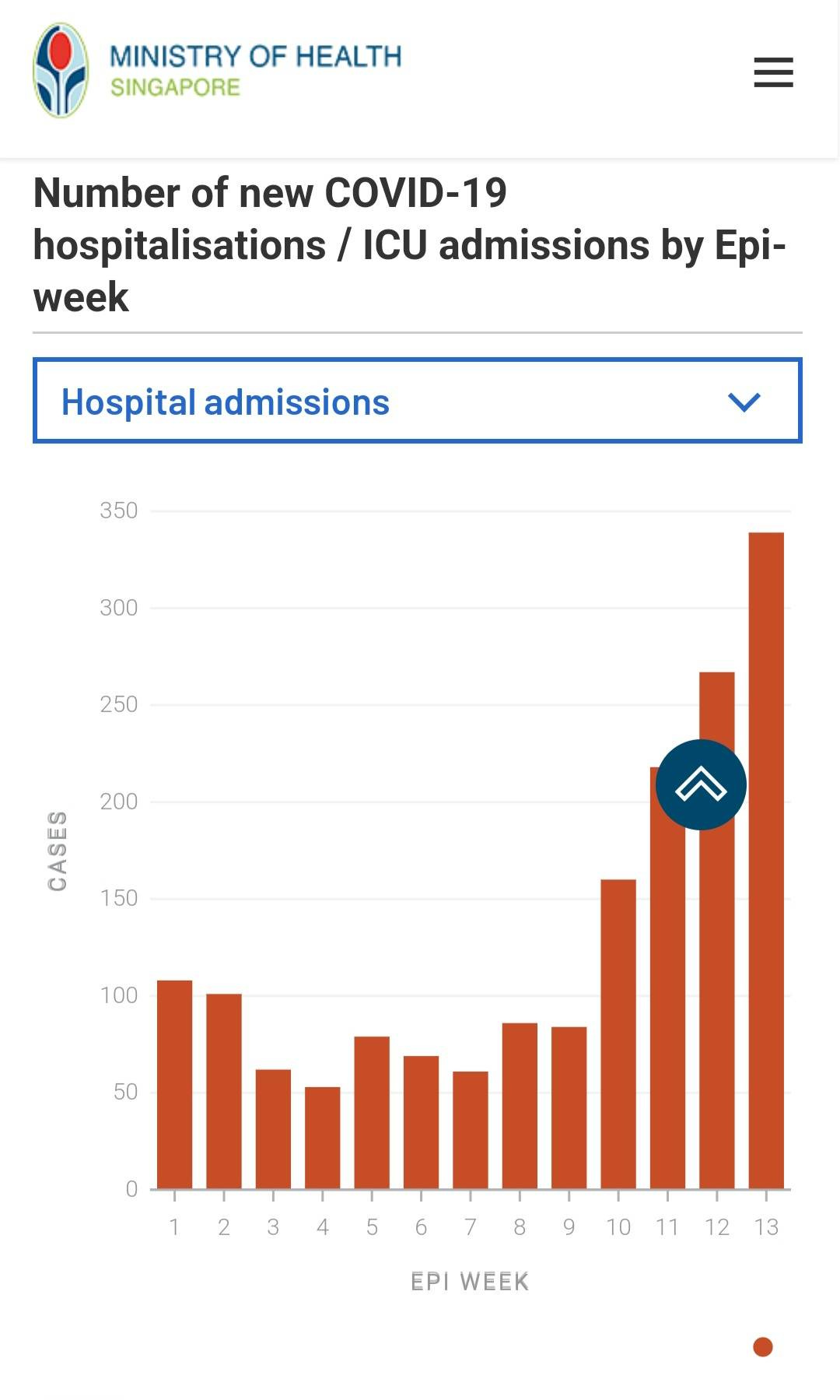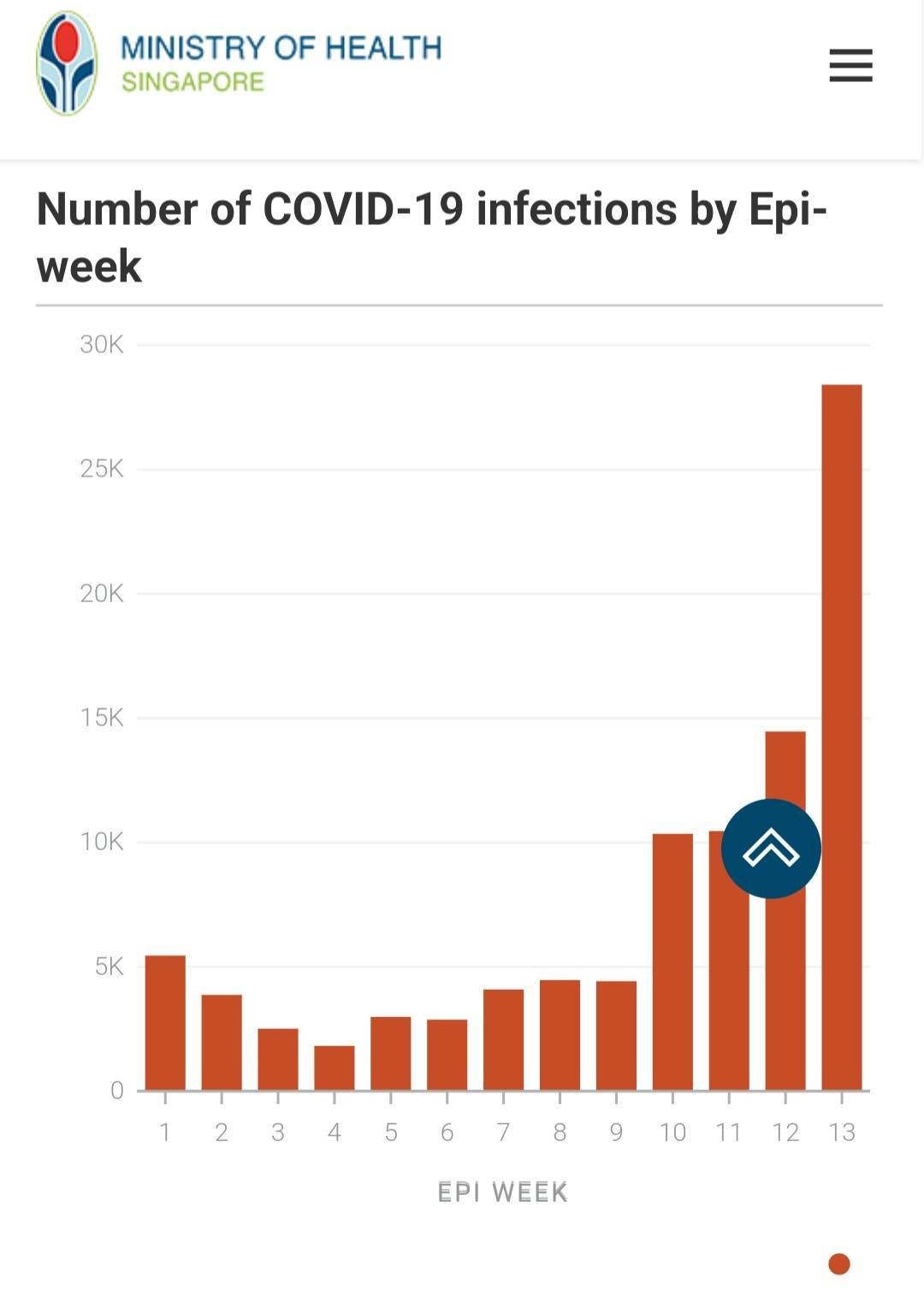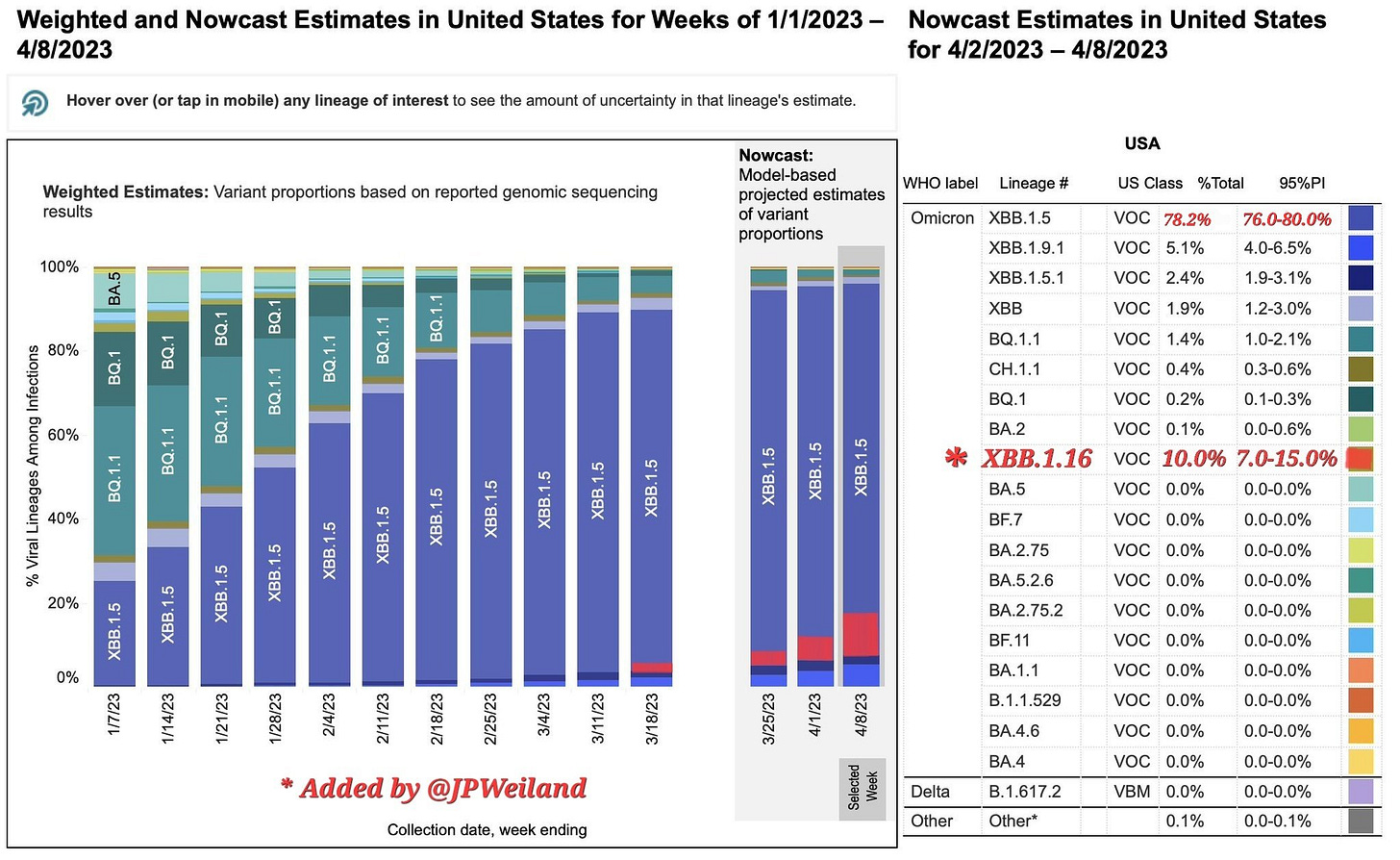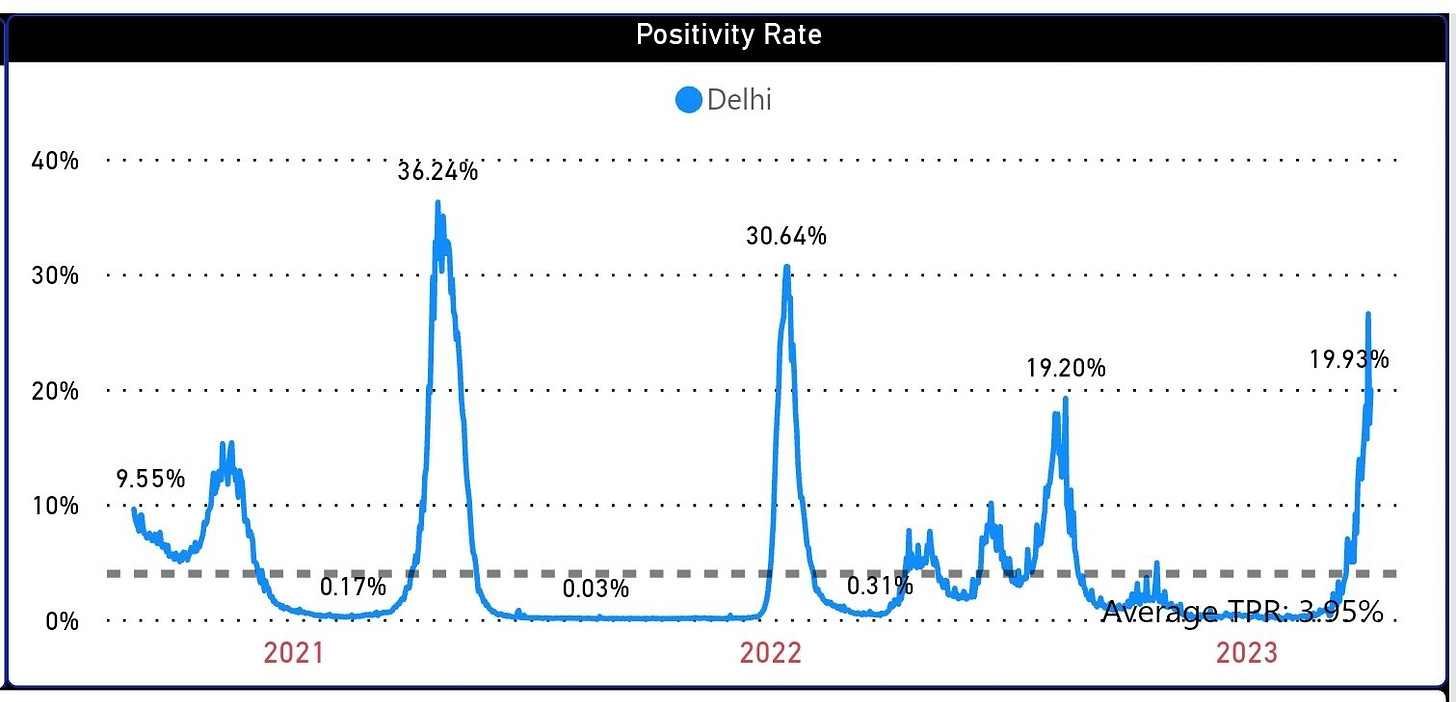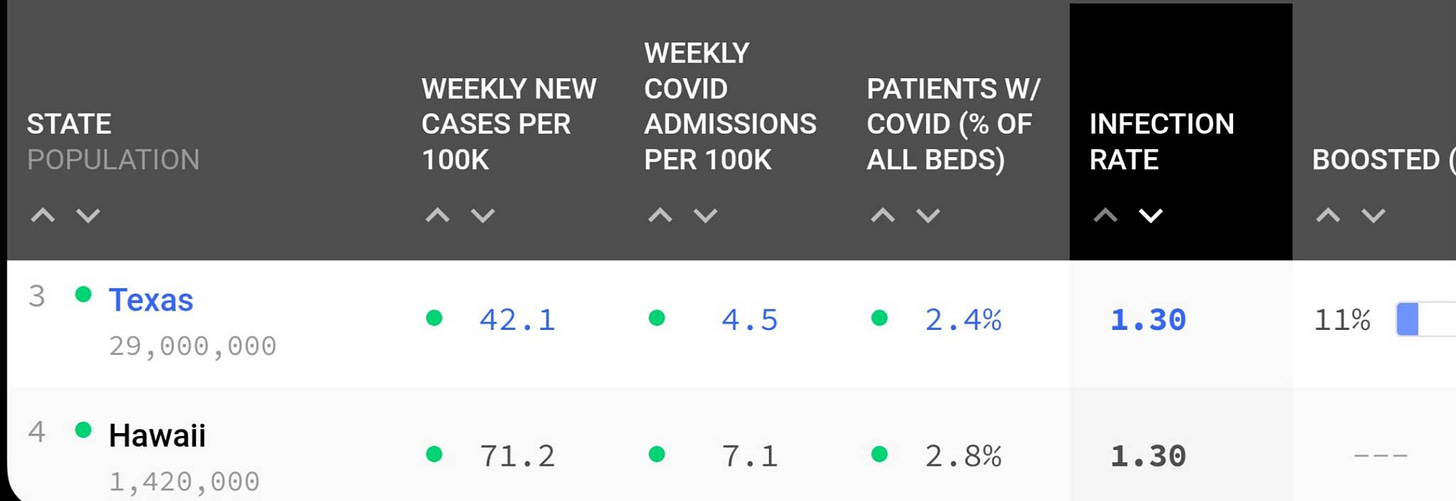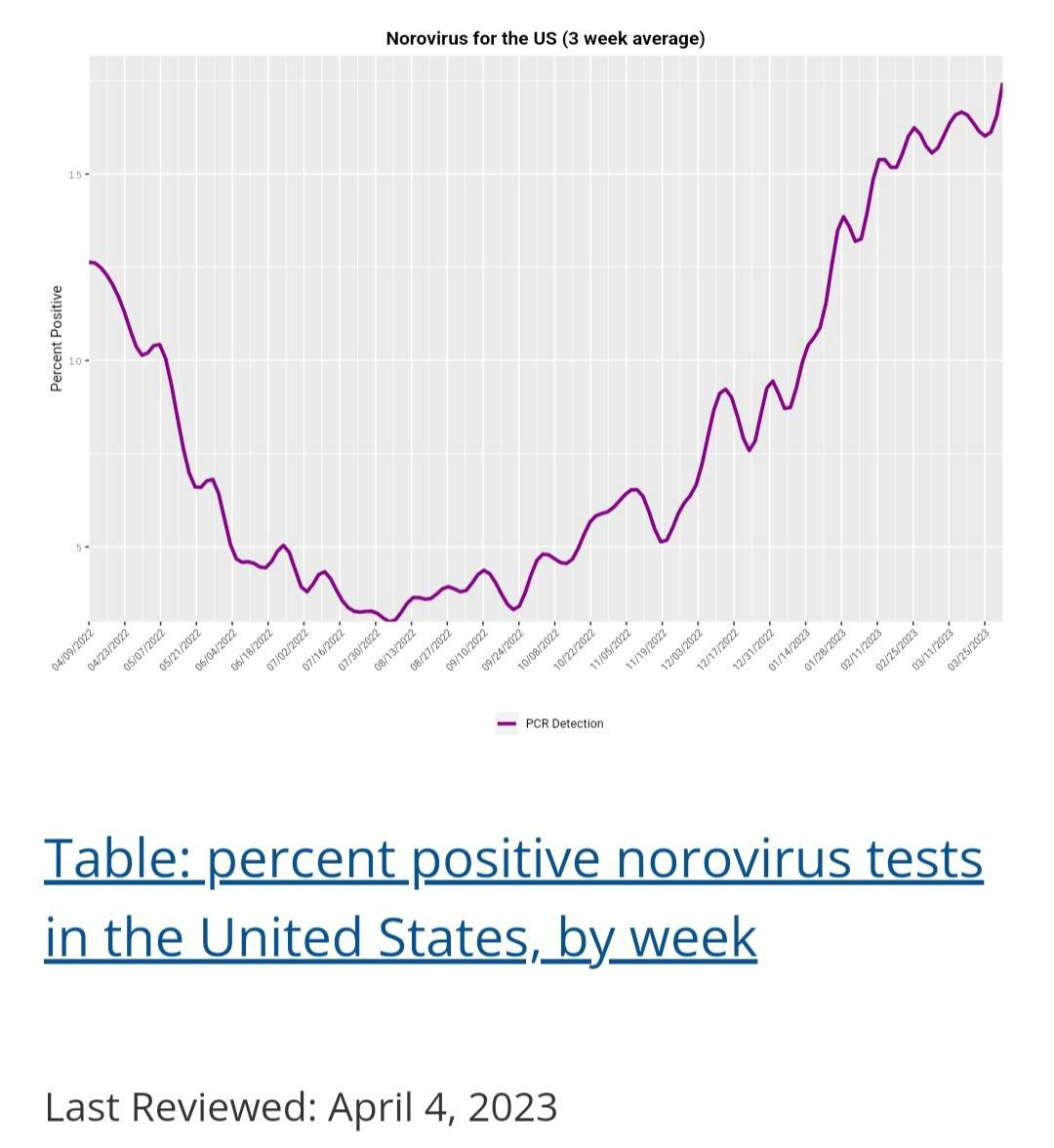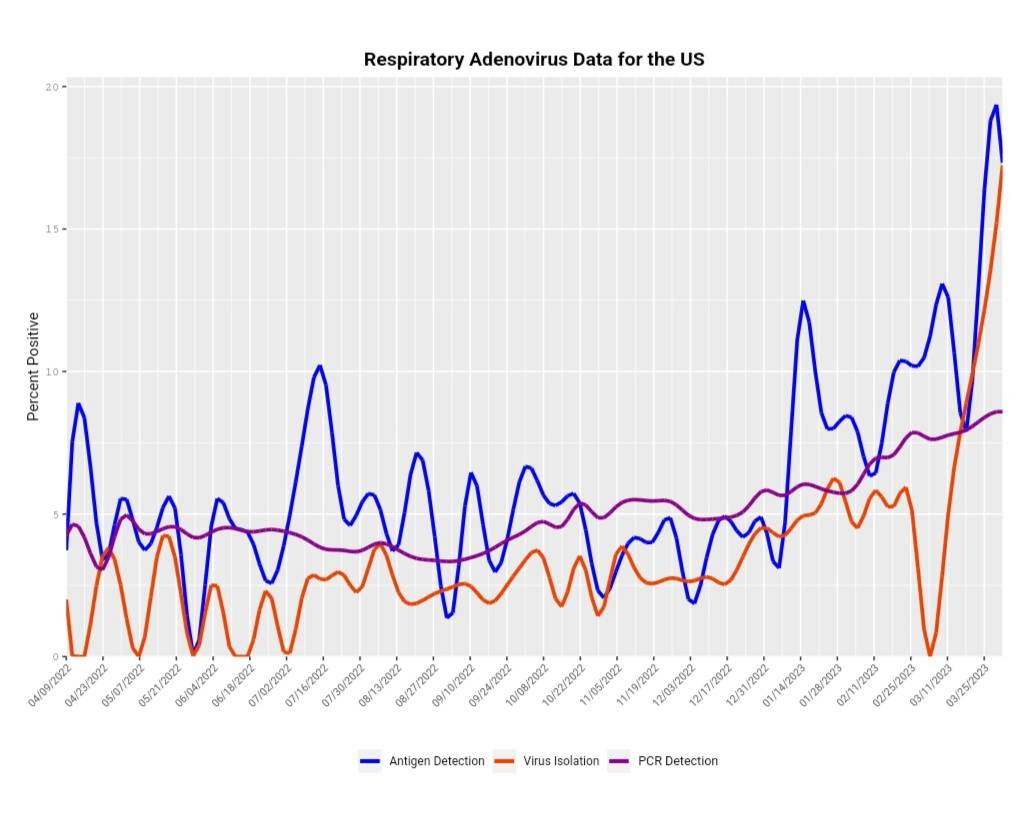Norovirus and Respiratory Adenovirus are Very Prevalent in the U.S./ Arcturus (XBB.1.16) Surge Gains Momentum in the U.S. and Singapore./ India Takes Proactive Measures to Prepare Hospitals.
Cases have been doubling every 5 1/2 days in Delhi, India. We should expect the same.
XXB.1.16 is in at least 25 countries and 23 states. XBB.1.16.1 is right behind it, and a few other variants, like XBB.1.31, are already lined up behind them. Research on the mutation that might be driving a huge advantage in XBB.1.31 is here.
Singapore
Singapore has the 2nd highest level of XBB.1.16. Singapore is a few weeks behind India, but we are already seeing the exponential growth of new cases and hospitalizations. We will have to watch closely to see if this trend continues, but so far we have two countries, India and Singapore, with increasing cases, hospitalizations, and deaths, and they both have a higher prevalence of Arcturus (XBB.1.16).
India Hospital Readiness Assessment April 10 and 11, 2023
India is experiencing the biggest surge of COVID-19 cases and deaths in over six months. XBB.1.16 variant and also the XBB.1.16.1 variant, which is even more infectious and immune suppressive, are driving the new surge.
Officials are taking steps to prepare hospitals for the increase. On April 10 and 11, 2023, a mock drill will be held across the country to assess the readiness of both public and private hospitals. Health Minister Mansukh Mandaviya will be visiting AIIMS to oversee the initiative. This is something other countries should consider in preparation for this variant and others in the line-up. Taking action as early as possible is the most effective and protects the most people.
Over the past week, many states in India have reintroduced COVID-19 restrictions, including mask mandates, due to the rise in cases. On Sunday, several states reported increases in new cases and more deaths related to the virus.
Mandaviya has urged state health ministers to monitor trends of influenza-like illness and severe acute respiratory infection cases, identify emergency hotspots, increase testing and vaccination efforts, and ensure hospitals are ready to handle COVID-19 patients.
N-95 or similar masks, worn properly, are still the best personal protection.
The United States is Ignoring Arcturus (XBB.1.16)
The United States has not included data on the XBB.1.16 variant in the latest CDC variant proportions, similar to what they did with the XBB.1.5 variant. This delay in releasing information has caused concern as it can further erode trust in the CDC. In the past, the CDC waited until New Year's Eve to unveil the XBB.1.5 variant, which was already widespread across the U.S. by that time. This approach is seen as a very poor strategy. However, JWeiland on Twitter updated the CDC graph to estimate the proportion of the XBB.1.16 variant.
Raj Rajnarayanan has been keeping great track of the variants, and he has XBB.1.16 at 8.7% prevalence in CA and 11% in NJ, so this is in line with the graph above. We have to keep in mind that all the sequencing data is a couple weeks behind reality and very limited. This variant is doubling every six or so days, which means that these numbers could be more than doubled by now.
JWeiland noted, “The case-doubling time in Delhi has been 5.5 days for the last month. That's quite fast. Still no signs of a slowdown of XBB.1.16 in India. The positivity rate is still increasing quickly.”
TACT has also been keeping track of the infection rates in the U.S. Last week, 22 states were above 1. Three days ago, 33 states were above 1, and today 40 states are above 1. An infection rate above 1 means that cases are increasing. Oklahoma, North Dakota, Texas and Hawaii are at the top of the list with the highest infection rates, according to COVIDActNow.org
The U.S. should absolutely start warning those at greatest risk, make sure hospitals are prepared, and reinstate mask use in all healthcare settings, public transportation, and schools. If we took the proactive steps to increase filtration and ventilation to a level that maintained CO2 at 600 ppm with HEPA level filtration, then we could be more at ease, but since that hasn’t happened, this variant will move through schools and homes quickly, creating a situation where hundreds of thousands of people could end up with long-term health issues, unpaid sick days, children will lose much needed time from school, and all of this hurts the economy now and in the future. Taking proactive steps like India is doing is the right move.
Norovirus is at a very high prevalence
The norovirus is at higher levels than last year, so be aware of this as well. The symptoms of the norovirus, also known as the "stomach flu," can include the following:
Nausea
Vomiting
Diarrhea
Stomach cramping or pain
Low-grade fever
Chills
Muscle aches
Headache
Fatigue
Symptoms typically appear within 12 to 48 hours after exposure to the virus and can last for 1 to 3 days. The norovirus is highly contagious and can spread easily from person to person. If you are experiencing these symptoms, it is important to stay hydrated and avoid contact with others to prevent the spread of the virus.
Respiratory adenovirus is also circulating at its highest levels of the year.
The symptoms of respiratory adenovirus can vary depending on the specific strain of the virus and the severity of the infection. However, common symptoms can include:
Fever
Sore throat
Cough
Runny or stuffy nose
Sneezing
Headache
Body aches
Pink eye (conjunctivitis)
Swollen lymph nodes
Difficulty breathing (in severe cases)
Symptoms usually appear within 2 to 14 days after exposure to the virus and can last for several days to a few weeks. Adenoviruses can be spread through respiratory droplets from an infected person's cough or sneeze, close personal contact, or touching a contaminated surface and then touching one's face or mouth. If you think you have a respiratory adenovirus infection, you should rest, stay hydrated, and see a doctor if your symptoms get worse or last longer than a few days.
Co-infections between COVID-19 and other viruses can occur and can be more severe than either virus alone. Therefore, it is crucial to get tested for COVID-19 to determine what you are dealing with. Rapid tests are less accurate than PCR tests and should be repeated 24 to 48 hours after the first test. While PCR tests are not 100% accurate, they are generally more reliable than rapid tests and are best done in a doctor's office.
Since many of the symptoms of COVID-19 overlap with those of other viruses, it can be difficult to know which virus someone has. It is important to prevent transmission within households, especially if someone is sick with COVID-19. Even if someone is asymptomatic or pre-symptomatic, they can still spread the virus, which is why it is crucial to take proactive measures to prevent the spread of these viruses in schools, homes, hospitals, and other settings.
Independent sources that are not beholden to corporations, large donors, political parties, or any other group are more important than ever. Consider becoming a paid subscriber to help support this work.
Consider becoming a free or paid subscriber if you are not already a member of the T.A.C.T. community.
Please share your thoughts and insights. Let us know how COVID is impacting you or your community.






